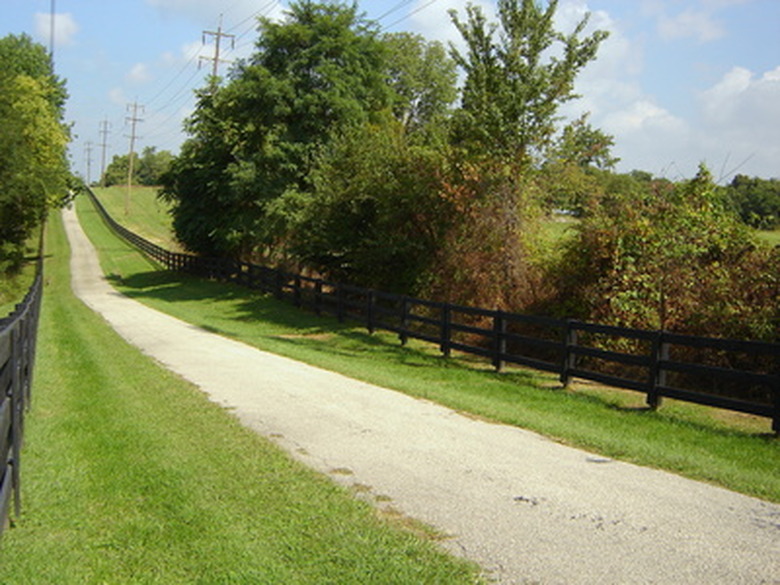Acreage Landscaping Ideas
Suburban and city landscaping differs from rural landscaping. Where a few types of shrubs and flowers provide adequate landscape plants in small yards, rural homes near farmland and homes on acreage require additional consideration. Design your acreage landscape by contemplating your site's existing characteristics. Determine the amount of space you require to implement windbreaks, outbuildings and gardens. Many rural properties require protection from the elements. A good landscape design for large areas of land requires careful planning.
Fencing
Determine what types of fences you require in the country. Barbed wire fences work well along the outer edge of the landscape to keep livestock and some wildlife out of your rural yard. This inexpensive wire fencing performs well on large acreages, but doesn't add ornamental value near yards and gardens. Use this functional fence along outlying areas and use wood near your house, yard and garden. Split-rail fences and post fences divide sections of acreage, while providing an attractive backdrop to lawns and plants.
- Suburban and city landscaping differs from rural landscaping.
- A good landscape design for large areas of land requires careful planning.
Windbreaks
Wind poses a problem for many areas in the country. Trees planted tightly in rows provide protection against damage from wind. Mass plantings of trees also provide protection in areas of water erosion, such as hillsides and low-lying areas. Select some quick-growing varieties of trees for windbreaks, such as poplars and cottonwoods. Many rural homeowners recycle this wood for firewood in subsequent years. Consider the expected height of mature trees when planting. Avoid planting tall varieties near structures and electrical lines. Guard against spreading wildfires by planting hedgerows and windbreaks at least 30 feet away from your home.
- Wind poses a problem for many areas in the country.
- Mass plantings of trees also provide protection in areas of water erosion, such as hillsides and low-lying areas.
Ponds
Ponds provide both beauty and purpose in acreage landscapes. Many landowners excavate ponds in low areas of their property to retain water for plant irrigation and waterfowl. Ponds work well in areas with heavy, clay soils. Excavated ponds in areas with sandy or rocky soil require thick liners to retain water. Ponds in dry areas fill up after a rainfall or snowmelt and dry out during arid months. Damming an existing stream creates a retention pond. Enhance a functional pond by rimming it with attractive vegetation, such as willows and reed grasses. Add attraction by forming a flagstone path from your house to your pond.
- Ponds provide both beauty and purpose in acreage landscapes.
- Many landowners excavate ponds in low areas of their property to retain water for plant irrigation and waterfowl.
Plants
Acreages contain plenty of land for planting a variety of trees, shrubs, flowers, herbs and vegetables. Consider starting a small apple orchard or vineyard in an outlying area. Lawns and plants require maintenance. Native plants grow naturally and require little additional water or weeding. Create a naturalized garden with native plants and grasses. These native varieties often attract wildlife to your acreage. With plenty of room for planting, select flat, sunny locations for your vegetable gardens and herb gardens.
- Acreages contain plenty of land for planting a variety of trees, shrubs, flowers, herbs and vegetables.
- Native plants grow naturally and require little additional water or weeding.
